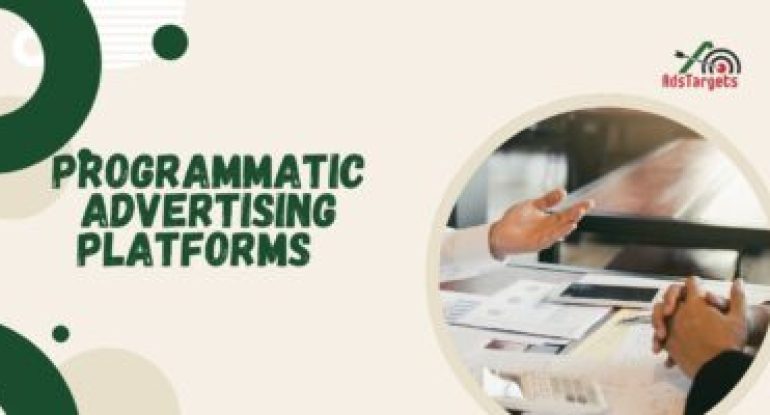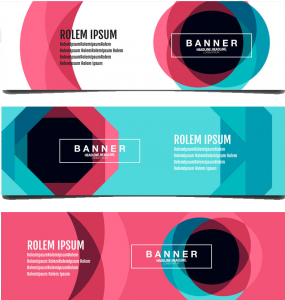If you’re a savvy publisher looking to maximize ad revenue without the hassle of manual ad placements, programmatic advertising platforms are the way to go. The industry is booming, with ad spend in the U.S. projected to hit a staggering $271 billion by 2025—and for good reason.
With high-quality ad templates and premium ad inventory, these platforms don’t just boost your earnings—they enhance the user experience and drive better engagement. And let’s be real, happy users stick around longer, which means even higher retention and revenue in the long run.
But here’s the big question: with so many programmatic advertising platforms out there, how do you pick the right one for your needs? That’s exactly what we’re here to break down. Our carefully curated list will help you find the perfect match—whether you’re all about better targeting, higher fill rates, or just a more seamless ad experience. Let’s dive in.
Table of Contents
ToggleWhat’s Programmatic Advertising?

Programmatic advertising is basically the smart, data-driven way to buy and sell ad space online. Instead of the old-school method (endless proposals, manual negotiations, and back-and-forth emails), programmatic advertising platforms use AI and algorithms to handle it all in real time. No guesswork, no delays—just automated ad buying at scale.
Programmatic advertising platforms don’t just throw ads into the digital void and hope for the best. They analyze traffic data, user behavior, and targeting metrics to place your ads where they’ll actually get results. That means higher impressions, better engagement, and a stronger ROI—whether you’re a small business or a big-name brand.
But let’s clear up a common myth—programmatic ad buying isn’t 100% hands-off. You’re not just setting it and forgetting it. While it automates the heavy lifting (no more manually setting insertion orders or dealing with ad tags), marketers still need to optimize, test, and tweak campaigns to get the best performance.
Bottom line? If you’re serious about digital advertising, tapping into programmatic advertising platforms is a no-brainer. They give you more control, better targeting, and a smarter way to spend your ad budget—so you can focus on what really matters: driving results.
Top Programmatic Advertising Platforms for Publishers?

Check out some of the best options available right now:
#1. GOOGLE AD MANAGER
When it comes to programmatic advertising platforms, Google Ad Manager is a big-league player—built for high-traffic publishers who are serious about monetizing their digital real estate. If your site, app, or video content pulls in significant eyeballs, this platform hands you all the right tools to manage, optimize, and squeeze the most revenue out of your ad inventory.
Here’s the deal: advertisers bid in real-time for premium ad slots, and publishers get to maximize earnings with precision-targeted ad placements. The Google Ad Exchange (AdX) integration ensures you’re getting the best possible deals by allowing multiple demand sources to compete for your inventory. That means higher CPMs, better yield, and more money in your pocket.
But what makes Google Ad Manager stand out among other programmatic advertising platforms?
#1. Smart Monetization & Automated Optimization
This isn’t just an ad server—it’s a full-fledged revenue engine. With features like:
✔ Dynamic Allocation – Automatically prioritizes higher-paying bids to boost earnings.
✔ Automated Optimization – Ads are adjusted on the fly based on real-time performance.
✔ Unified Pricing Rules – Set bidding parameters and let demand sources fight for ad space, ensuring top-dollar payouts.
#2. Advanced Targeting & Audience Insights
One of the biggest perks? Granular audience targeting. You can serve ads based on:
✔ User interests, demographics, and location
✔ Cross-device behavior (so you’re not losing users who switch from desktop to mobile)
✔ First-party and third-party data insights for laser-focused ad delivery
And let’s not forget real-time reporting—giving you deep insights into your audience and ad performance, so you can make smarter decisions without the guesswork.
#3. Fraud Protection & Brand Safety
With the rise of ad fraud, Google Ad Manager comes equipped with industry-leading safeguards:
✔ Pre-bid filtering – Blocks low-quality, non-viewable, or fraudulent ads before they even run.
✔ Brand protection – Ensures your ads only appear in safe, relevant environments.
✔ Compliance with industry standards – Keeping you in the clear with regulations.
#4. Supported Ad Inventory
Google Ad Manager isn’t just for websites. You can monetize:
✔ Mobile apps
✔ Games
✔ Connected TVs & streaming devices
✔ Audio content (like podcasts & music platforms)
Requirements & Pricing
Want in? Here’s what you’ll need:
✔ A Google account + active AdSense account
✔ Minimum $100 balance for monthly payouts
✔ For Display & Video 360, you need an active website with quality content and compliance with ad policies
Pricing?
✅ Google Ad Manager (Free) – Basic ad management for publishers.
✅ Google Ad Manager 360 (Paid) – More enterprise-level tools, insights, and automation.
If you’re a publisher looking to level up your ad revenue strategy, Google Ad Manager is a top-tier choice. With powerful automation, real-time bidding, and bulletproof fraud protection, it stands tall among the best programmatic advertising platforms in the game. Whether you’re managing a website, app, or video network, this tool streamlines everything—so you can focus on growing traffic and making bank.
#2. ADOBE ADVERTISING CLOUD

If you’re looking for a solid programmatic advertising platform that simplifies ad buying, targeting, and optimization, Adobe Advertising Cloud should be on your radar. It’s part of Adobe Experience Cloud, alongside Adobe Marketing Cloud and Adobe Analytics Cloud, giving you a powerhouse suite to run, analyze, and fine-tune your ad campaigns—all in one spot.
Adobe Advertising Cloud isn’t just another ad-buying tool—it’s an advanced programmatic advertising platform that connects businesses with the right audience through multiple ad formats. Whether you’re running display, video, mobile, search, or social media ads, this platform has you covered. Plus, with real-time analytics, you can tweak bids, optimize budgets, and maximize your return on investment (ROI) on the fly. No more wasting ad spend on low-performing campaigns.
One of Adobe’s biggest flexes? It syncs seamlessly with other Adobe products like Adobe Analytics, Adobe Target, and Adobe Audience Manager (its badass data management platform). This means you get a 360-degree view of your audience’s behavior—allowing you to craft data-driven marketing strategies that hit harder and perform better.
Key Features That Make It Stand Out
✅ All-in-one multi-channel campaign management
✅ Advanced audience targeting with laser-sharp segmentation
✅ AI-driven bidding for optimized ad spend
✅ Real-time insights & detailed reports on engagement and performance
What You Need to Get Started
✅ Register & provide business details on Adobe Advertising Cloud
✅ Submit identity & ownership documents for verification
✅ Plan your campaign strategy—define your target audience, budget, and creatives
✅ Get approval from Adobe’s experts before your campaign goes live
How Much Does It Cost?
✅ Pay-as-you-go—great for small businesses and startups
✅ Enterprise plans—for big brands needing extra features and dedicated support
Ad Inventory: Where Can You Run Your Ads?
✅ Traditional display ads
✅ Video ads
✅ Audio ads
✅ Mobile ads
✅ Native ads
Targeting That Actually Works
✅ Demographic, interest, and behavior-based targeting
✅ Custom audience segments powered by first- & third-party data
✅ AI-driven predictive analytics to find your ideal audience
✅ Cross-device targeting—because people switch devices all the time
Keeping It Safe & Fraud-Free
✅ Fraud prevention & brand safety tools
✅ Data encryption & security protocols
✅ Multi-layered protection to keep your budget safe from fake impressions**
If you’re serious about scaling your advertising game, Adobe Advertising Cloud gives you cutting-edge tools to target, optimize, and track performance like a pro. Whether you’re a small business experimenting with ads or a major brand running large-scale campaigns, this platform puts programmatic advertising on autopilot—so you get the most bang for your buck.
#3. THE TRADE DESK
If you’re in the game of programmatic advertising platforms, then The Trade Desk is one name you can’t afford to ignore. This demand-side platform (DSP) is one of the biggest players in the ad tech space, giving advertisers access to premium ad inventory across multiple channels. With real-time bidding (RTB), private marketplaces, geo-targeting, and advanced audience data, it’s a one-stop shop for brands looking to run high-impact, data-driven ad campaigns.
The Trade Desk isn’t just another programmatic advertising platform—it’s built for precision, performance, and scale. Whether you’re looking to reach new audiences or re-engage existing customers, the platform provides powerful automation tools and high-quality audience data to fine-tune every ad placement. Plus, with advanced reporting metrics like cost per impression (CPM), cost per click (CPC), cost per acquisition (CPA), and return on investment (ROI), you always have a clear picture of how your campaigns are performing.
What Makes The Trade Desk Stand Out?
✅ Real-time programmatic marketing automation to streamline your ad buying
✅ Self-service, cloud-based platform for complete control over campaigns
✅ Access to premium inventory across display, video, mobile, and audio ads
✅ Nielsen Digital Ad Ratings (DAR) to measure audience reach and performance
✅ Data marketplace with high-quality audience insights for laser-focused targeting
Getting Started with The Trade Desk
✅ Sign up and create an account—no long-term commitments required
✅ Set campaign objectives—define your goals and strategy
✅ Design compelling ad creatives that meet platform guidelines
✅ Choose your target audience based on behavior, device, and demographics
✅ Select a buying model—CPM, CPC, or CPA
Flexible Pricing for All Advertisers
✅ Pay-as-you-go model—perfect for businesses testing the waters
✅ Flat fee pricing for larger campaigns with predictable budgets
✅ Volume discounts for high-spend advertisers
✅ Custom enterprise plans for brands that need tailor-made solutions
Ad Inventory: Where Can Your Ads Run?
✅ Display ads
✅ Video ads
✅ Audio ads
✅ Mobile app ads
Targeting: Hit the Right Audience Every Time
✅ Real-time audience targeting based on user identity and behavior
✅ Personalized ad experiences tailored to individual users
✅ Insights from multiple data sources to refine ad delivery
✅ AI-powered analytics to optimize performance and increase conversions
Keeping Ads Fraud-Free & Brand-Safe
✅ Pre-bid fraud detection to screen out low-quality inventory
✅ Post-bid fraud checks to eliminate fake impressions
✅ Brand safety tools like keyword blocking and contextual analysis to prevent ads from appearing in sketchy environments
If you want smarter, more efficient ad campaigns, The Trade Desk delivers. From granular audience insights to real-time bidding and fraud protection, it has everything you need to scale your digital advertising like a pro. Whether you’re a small business looking to test programmatic ads or a major brand running high-budget campaigns, this platform gives you the tools to maximize your ROI and stay ahead of the competition.
#4. XANDR
If you’re hunting for a programmatic advertising platform that delivers automation, data-driven insights, and premium inventory, look no further than Xandr—Microsoft’s powerhouse ad exchange. This demand-side and supply-side platform (DSP & SSP) is built for both advertisers and publishers, making it one of the most versatile players in the ad tech game.
Xandr thrives in video advertising, giving brands a chance to tap into highly engaged audiences across multiple screens—whether it’s Connected TV (CTV), mobile, display, or audio ads. The platform also offers deep audience insights, helping advertisers refine their targeting strategies while giving publishers the tools to maximize their ad revenue.
What Makes Xandr stand out
✅ End-to-end programmatic solution for seamless campaign management
✅ Automated ad buying with precision targeting
✅ Global premium ad marketplace for high-quality inventory
✅ Multiple ad formats—Connected TV, video, audio, mobile, and display
✅ Comprehensive analytics to track and optimize campaign performance
Getting Started with Xandr
✅ Submit creative formats for approval (must meet Xandr’s specs)
✅ Follow Xandr’s ad policies—no shady business allowed
✅ Set up an Ad Quality Profile to maintain high ad standards
✅ Political advertisers in the US? Be ready to provide extra documentation
Flexible Pricing Models
✅ Pay-per-impression (CPM) for broad reach campaigns
✅ Cost per click (CPC) if you want to pay only for engagement
✅ Cost per acquisition (CPA) for conversion-focused advertising
✅ Fixed fee pricing for guaranteed impressions or clicks
Ad Inventory: Where Can You Run Ads?
✅ Video ads
✅ Mobile ads
✅ Privacy and function macros
✅ Third-party ad providers
✅ Ads.txt & app-ads.txt initiatives for transparency
Audience Targeting: The Right Ad, The Right User
✅ Demographic-based targeting—age, gender, location, and more
✅ Interest and behavior-based targeting—serve ads based on real user habits
✅ Device-based targeting—desktop, mobile, tablet, or even OS-specific ads
✅ Retargeting—re-engage users who have interacted with your website or app
✅ Custom audience creation for laser-focused ad campaigns
Keeping Ads Safe & Fraud-Free
✅ Strict privacy policies to prevent shady and illegal activity
✅ Content moderation to block harmful or offensive content
✅ Partnership with clean.io to prevent malvertising and keep the ad ecosystem clean
Xandr is not just another programmatic advertising platform—it’s a scalable, data-rich, premium ad exchange that gives advertisers powerful automation tools and publishers the ability to maximize revenue. Whether you’re running video-heavy campaigns or experimenting with omnichannel advertising, Xandr brings the heat.
#5. PUBMATIC
When it comes to programmatic advertising platforms, PubMatic is a major player that connects publishers and advertisers with a data-driven, high-performance ad exchange. Founded in 2006 and headquartered in Redwood City, California, this ad tech giant specializes in real-time bidding (RTB), header bidding, and cutting-edge monetization tools that help publishers maximize revenue and advertisers reach their ideal audience without wasting ad spend.
Why PubMatic Stands Out
Unlike some other programmatic advertising platforms that focus only on automation, PubMatic takes it up a notch with granular control over ad inventory, powerful audience targeting, and real-time analytics to ensure every ad dollar counts. Publishers get access to premium ad demand, while advertisers tap into a diverse omnichannel inventory—from CTV and OTT to mobile and native ads.
Key Features That Make PubMatic a Beast
✅ Private marketplace (PMP) with high-quality, brand-safe ad inventory
✅ Diverse ad formats—Display, Video, Native, Mobile, OTT, CTV, Banner Ads, and more
✅ Real-time analytics for insight-driven decisions
✅ OpenWrap header bidding for better ad yield management
✅ Advanced ID management for cookieless ad targeting
✅ Ad-blocking solutions to bypass ad blockers and recover lost impressions
Getting Started with PubMatic
✅ Publishers need a minimum NewsGuard score of 60 for credibility
✅ Strong user engagement is required—low-value, bot-ridden traffic won’t cut it
✅ Predominantly high-quality content—no spammy, ad-heavy pages
✅ Zero tolerance for explicit, illegal, or harmful content—hate speech, drugs, and illegal weapons are a no-go
Pricing and Monetization
✅ Custom-tailored pricing plans based on publisher needs
✅ Flexible bidding models to maximize ad revenue
Audience Targeting Like a Professional
✅ PubMatic Connect unlocks:
Known identity targeting (email-based, first/second-party data)
Contextual signals (match ads with content relevance)
Seller-defined audiences (custom audience segmentation)
Modeled audiences (AI-driven audience expansion)
✅ Cookie-alternative targeting for privacy-friendly campaigns
✅ Omnichannel inventory access for diverse ad placement
✅ Dayparting—show ads at the best-performing times
✅ Frequency capping—control how often users see your ads
✅ Custom & lookalike audiences to reach new and similar users
Fraud Prevention and Brand Safety
✅ Real-time ad fraud scanning—no shady bot traffic allowed
✅ Strategic anti-fraud partnerships for clean ad delivery
✅ Fraud-Free Program—refunds for any verified fraudulent ad spend
PubMatic is not just another programmatic advertising platform—it’s a premium ad exchange that gives publishers and advertisers an edge. With next-level audience targeting, fraud prevention, and advanced monetization tools, this platform is tailored for serious ad buyers and sellers looking to maximize returns in the ever-evolving digital ad space.
#6. CRITEO

If you’re looking for a programmatic advertising platform that excels in retargeting, Criteo is the name you need to know. This ad tech giant specializes in bringing back lost visitors—those people who browsed your site, checked out your products, but dipped before making a purchase. Instead of letting them disappear into the digital abyss, Criteo uses data-driven, AI-powered retargeting to serve hyper-personalized ads that push them toward conversion.
What Makes Criteo Stand out?
Unlike your run-of-the-mill programmatic advertising platforms, Criteo doesn’t just serve ads—it serves the right ads to the right people at the right time. By leveraging cookies, AI algorithms, and real-time user behavior tracking, it delivers personalized ad experiences across web, mobile, and social platforms.
But here’s where it really shines: dynamic retargeting and contextual advertising. That means if a user was eyeing those sneakers on your site, they won’t just see a generic ad—they’ll see those exact sneakers in a visually appealing, click-worthy format designed to bring them back.
Key Features That Make Criteo a Must-Have
✅ No strict traffic requirements—even smaller publishers can get in
✅ Dynamic retargeting—keeps your brand in front of high-intent users
✅ AI-powered ad delivery—predicts what ads will get the best results
✅ Contextual targeting—places ads in content that matches user intent
✅ Commerce data set—taps into a massive database for better ad targeting
✅ Retail media solutions—helps brands expand their reach in retail spaces
✅ Predictive bidding—optimizes ad spend for maximum ROI
Getting Started with Criteo
✅ No minimum traffic requirements—perfect for growing publishers
✅ No shady clickbait tactics—ads need to be legit and user-focused
✅ No incentivized ad clicks—no rewards, no gimmicks, just real engagement
Pricing & Monetization
✅ Performance-based pricing model—pay only for actual ad results
✅ No upfront costs—you get what you pay for in terms of ad performance
Audience Targeting That Hits Different
✅ Lookalike modeling—finds new potential customers based on user behavior
✅ Dynamic product recommendations—shows users exactly what they want
✅ Predictive bidding—adjusts ad bids based on real-time performance
✅ Re-engages existing customers—keeps past buyers coming back for more
✅ Commerce data insights—breaks down customer journeys, behavior, and intent
Fraud Prevention and Brand Safety
✅ Advanced image recognition tech—filters out prohibited content
✅ Strict compliance standards—ensures a clean, fraud-free ad environment
Criteo isn’t just another programmatic advertising platform—it’s a retargeting powerhouse built for conversions and performance-driven results. Whether you’re an eCommerce brand looking to boost sales or a publisher trying to maximize ad revenue, Criteo’s AI-powered ad tech ensures your ads land in front of the right audience with precision and impact.
#7. SMARTYADS
If you’re hunting for a programmatic advertising platform that gives publishers and app developers full control over their ad inventory, pricing, and demand sources, SmartyAds is worth checking out. It’s a full-stack ad tech partner designed to maximize your ad revenue while keeping things transparent, efficient, and scalable.
Whether you’re looking to auction off unsold inventory through real-time bidding (RTB), score premium ad deals through private marketplaces (PMPs), or tap into programmatic direct sales for stable, high-value placements, SmartyAds has the tools to make it happen.
And the best part? The platform’s deep machine learning algorithms work behind the scenes to optimize pricing, increase competition, and boost eCPMs—so you’re never leaving money on the table.
What Makes SmartyAds a Beast in Ad Monetization?
Unlike some programmatic advertising platforms that are all hype and no substance, SmartyAds actually gives publishers control over their inventory while maximizing demand. Here’s how it stacks up:
✅ Header bidding integration—lets you access multiple demand sources at once, increasing competition for your ad space
✅ Smart Hub ad exchange—connects you with 25,000+ publishers and 2 billion daily impressions
✅ Adaptive CPM—ensures you’re getting the highest possible bid for each impression
✅ Private marketplaces (PMPs)—lets you negotiate high-value deals with premium advertisers
✅ Click booster—enhances ad engagement by boosting click-through rates
Advanced Targeting & Audience Control
SmartyAds doesn’t just spray ads everywhere and hope for the best—it lets you fine-tune your targeting to hit the right audience at the right time.
✅ Time-based ad scheduling—pick the best time slots for maximum visibility
✅ Device & OS targeting—deliver ads tailored to specific devices or operating systems
✅ Frequency capping—prevents ad fatigue by controlling how often users see your ads
✅ Negative targeting—exclude irrelevant audiences to prevent wasted impressions
✅ Zip-code level geotargeting—laser-focus your campaigns down to specific locations
✅ Retargeting & cookie matching—re-engage visitors who bounced before converting
✅ Conversion tracking & analytics—monitor interaction events, measure ROI, and refine strategies
Flexible Payment Models
With SmartyAds, you get multiple monetization options so you can choose what fits your strategy best:
✅ CPC (Cost-Per-Click)—get paid for actual ad clicks
✅ CPM (Cost-Per-Mille)—earn revenue per 1,000 impressions
✅ CPV (Cost-Per-View)—great for video ads where views drive revenue
Supported Ad Inventory
SmartyAds isn’t locked into just one ad type—you can run:
✅ Display & banner ads
✅ Native ads
✅ Text & video ads
✅ Mobile & web ads
✅ In-app advertising
Anti-Fraud & Brand Safety
Ad fraud is everywhere, and nothing kills your revenue faster than fake clicks and shady traffic. SmartyAds keeps things clean and secure with:
✅ 24/7 traffic safety monitoring—detects and blocks fraudulent traffic before it drains your budget
✅ Real-time fraud detection—stops malicious ads and low-quality impressions
✅ Strict compliance standards—ensures brand-safe placements across all channels
If you’re a publisher looking for a programmatic advertising platform that lets you monetize smarter, not harder, SmartyAds delivers. It’s got the tech, transparency, and targeting power to make your ad inventory work for you—not the other way around.
#8. SMAATO

If you’re a mobile app developer or publisher looking for a way to cash in on your ad space, Smaato is the programmatic advertising platform you need in your arsenal. This digital ad tech powerhouse connects you with top-tier advertisers, giving you full control over how your ads are served and monetized.
With real-time bidding (RTB) and programmatic advertising, Smaato ensures your ad inventory is always up for grabs at the best possible price. Whether you’re running banner ads, native ads, video ads, or mobile web ads, you can count on Smaato’s smart monetization tools to keep your revenue flowing.
Why Smaato Stands Out in Mobile Ad Monetization
What makes Smaato different? It’s not just another programmatic advertising platform—it’s built specifically for mobile publishers, with tools designed to maximize your ad earnings while keeping things transparent, efficient, and fraud-free.
✅ In-app header bidding—creates real-time pricing competition, leading to higher eCPMs and better fill rates
✅ SPX Monetization Solution—a dedicated platform for publishers, offering mediation, programmatic deals, and header bidding
✅ Ad mediation—optimizes demand by allowing multiple ad networks to compete for your inventory
✅ Audience targeting—delivers ads to the right users at the right time, increasing engagement and revenue
✅ Premium advertiser access—connects you with big brands and high-quality ad buyers
Monetization Without the Hassle
Smaato takes the guesswork out of ad monetization by giving you full control over how and where ads appear:
✅ Real-time bidding (RTB)—ensures your ad space sells at the highest possible bid
✅ Pre-packaged deals—streamlines direct ad sales for higher-value placements
✅ Contextual & behavioral targeting—lets you serve ads that actually make sense to your audience
✅ Precision targeting—filters audiences based on demographics, behavior, and device type
Supported Ad Formats
Smaato doesn’t lock you into one ad type—you get multiple options to suit your app or site’s layout and audience preferences:
✅ Display & banner ads
✅ Native ads
✅ Text ads
✅ Video ads
✅ Mobile web & in-app ads
Anti-Fraud and Brand Safety
Ad fraud is a buzzkill, and Smaato is not here for it. They take a strict, no-nonsense approach to keep your inventory clean and high-quality:
✅ Manual publisher approval—every new publisher is vetted before joining
✅ Advanced fraud detection—regular traffic assessments weed out bot traffic and shady clicks
✅ Dedicated traffic quality team—ensures you’re getting legit ad impressions and real user engagement
A Few Rules to Keep in Mind
While Smaato is open to a wide range of publishers, they do have some ground rules:
❌ No unmoderated UGC (user-generated content)—to avoid sketchy content
❌ No video chat or live streaming—keeps ad placements focused and brand-safe
❌ No under-construction sites—only fully operational properties allowed
❌ Publisher properties must be owned or controlled by the publisher—third-party approvals are rare
If you’re looking for a mobile-first, programmatic advertising platform that keeps your monetization on point, Smaato is a solid pick. It’s got the tools, the tech, and the targeting power to turn your ad space into a consistent revenue stream—without the headaches.
#9. ADPUSHUP
If you’re a publisher or website owner looking to boost ad revenue without ruining your site’s user experience, AdPushup is the programmatic advertising platform you need to check out. This tech-driven ad optimization solution takes a data-backed approach to help you maximize earnings from your ad inventory while keeping your audience engaged.
Founded in 2014, AdPushup has grown into a powerhouse for ad revenue optimization, offering everything from A/B testing to AI-driven audience targeting. It seamlessly integrates with top-tier ad networks like Google AdSense, giving you access to premium demand sources while optimizing ad layouts, sizes, and formats to squeeze every possible dollar out of your traffic.
Why AdPushup Stands Out
Unlike most programmatic advertising platforms, AdPushup goes beyond just serving ads—it helps you fine-tune your monetization strategy with:
✅ A/B testing for ad layouts—test different ad sizes, formats, and placements to see what works best
✅ Seamless header bidding integration—choose client-side, server-side, or hybrid solutions to increase ad revenue
✅ AdRecover technology—monetize users who have ad blockers enabled
✅ Comprehensive analytics & reporting—track every metric to fine-tune your monetization strategy
✅ Ad mediation—connect to multiple ad networks for higher competition and better payouts
Monetization Without the Guesswork
AdPushup’s optimization engine ensures your ads are performing at peak efficiency, helping you increase eCPMs and CTRs while keeping your site experience smooth:
✅ Supports AMP ads—get fast-loading, high-performance ads on Accelerated Mobile Pages
✅ AI-powered audience management (FirstAudience)—targets users based on context, content, and interests
✅ Advanced ad layouts—choose from sticky ads, docked ads, in-image ads, in-content ads, and more
Supported Ad Formats
AdPushup doesn’t limit you to generic banner ads—it offers diverse ad formats that fit naturally into your content:
✅ Sticky ads—stay in view without disrupting content
✅ Docked ads—positioned at the edge for better engagement
✅ In-image ads—monetize visual content with embedded ads
✅ Native ads—blend seamlessly into your content for higher CTR
✅ In-content ads—placed within articles for better visibility
✅ In-view ads—remain visible while users scroll
Fraud Prevention and Brand Safety
Nobody wants low-quality ads messing up their user experience or fraudulent traffic eating into their earnings. AdPushup takes security seriously:
✅ In-house & third-party fraud detection—blocks bots, click fraud, and invalid traffic
✅ Strict compliance with ad quality standards—ensures only brand-safe, high-quality ads
✅ AI-powered filtering—removes irrelevant, low-engagement ads
What You Need to Get Started
AdPushup isn’t for small-time publishers—you need to be making at least $5,000 per month in ad revenue to qualify. If you hit that mark, though, you’ll get custom revenue-sharing plans tailored to your specific monetization needs.
If you’re serious about ad revenue and want a programmatic advertising platform that optimizes earnings while keeping user experience top-notch, AdPushup is a solid choice. With A/B testing, ad mediation, header bidding, and AI-driven audience targeting, you get complete control over your monetization strategy—without the trial-and-error headaches.
#10. MAGNITE
Magnite (formerly Rubicon Project, after merging with Telaria) is one of those top-tier programmatic advertising platforms that’s been a game-changer for both publishers and advertisers. They’re all about streamlining the digital ad process, giving you a data-driven platform to easily buy and sell digital inventory. Whether you’re working with video ads, display ads, or even CTV, Magnite has got you covered.
What really sets Magnite apart is how straightforward they make complex ad deals. The platform is designed to simplify everything, offering easy access to private marketplaces (PMPs), programmatic guaranteed (PG) deals, and real-time auctions. This means publishers can access premium inventory and monetize more effectively, while advertisers get targeted ad placements that reach the right audience, at the right time.
Why Magnite Is a Top Choice?
Here’s why Magnite is a solid pick for ad revenue optimization:
✅ Real-time reporting—Customize your reports on the fly to track your campaigns in real-time and make quick decisions.
✅ Ad pod management—Optimize your inventory by managing ad pods and configurations, making sure you’re getting the most out of your space.
✅ Omnichannel support—From CTV to mobile, audio, DOOH, and video, Magnite supports ads across multiple platforms.
✅ Premium video inventory (Clearline)—Gain exclusive access to top-tier video content that can boost your ad revenue.
✅ Real-time header bidding—Optimize ad auctions and maximize revenue with live, real-time header bidding.
✅ Audience segmentation—Create, segment, and sync your audience data to ensure you’re delivering the right ad to the right user.
Flexible Pricing and Ad Inventory
Magnite offers customizable pricing depending on what you need. So whether you’re working with a small budget or have a large-scale campaign, they’ll tailor it to fit your needs.
As for supported inventory, Magnite supports all kinds of formats:
✅ CTV (Connected TV)
✅ Video ads
✅ Mobile
✅ Display ads
✅ Audio
✅ DOOH (Digital Out-Of-Home)
Audience Targeting and Data Management
Magnite makes it easy to target specific audiences with their DMP (Data Management Platform). Whether you want to segment users by behavior, interests, or demographics, you can create highly-targeted campaigns that reach the people who matter most.
Anti-Fraud and Brand Safety
Magnite takes fraud prevention and brand safety seriously. With a dedicated IQ team, they ensure:
✅ Pre-impression filtering—Blocks potential fraud before it even happens.
✅ Post-impression monitoring—Keeps track of non-human traffic to maintain the integrity of your campaigns.
✅ Vetting process for new publishers—Ensures only quality inventory is listed for sale.
✅ Ads.txt adoption—Ensures authorized traffic is declared, keeping everything transparent.
Plus, they’re all about keeping things brand-safe, with viewability checks and contextual safety measures that help avoid any awkward situations for advertisers.
Magnite’s programmatic advertising platform is a solid bet if you’re looking to optimize your ad revenue and target the right audience across a wide range of formats and channels. With real-time bidding, premium inventory, and advanced audience management, this platform is built to make ad monetization as smooth as possible for publishers while offering advertisers the control they need to get results. So, if you’re ready to take your ad game to the next level, Magnite is definitely worth considering.
How Does a Programmatic Advertising Platform Work?

Alright, let’s break it down. Programmatic advertising platforms are like the engine behind the digital ad world, making sure ads get placed exactly where they need to be—quickly and efficiently. Here’s how it works:
Advertisers use these platforms to bid for ad space in real-time, and publishers make their available ad inventory ready for sale. All of this happens automatically, thanks to smart algorithms that make decisions based on data. This means both parties get exactly what they’re looking for, and it’s all powered by data-driven insights.
When an ad impression is available (let’s say someone visits a website), the platform kicks into gear and runs an auction for that ad space. The highest bidder wins, and the ad is shown to the user. All of this takes milliseconds, and it happens without any manual involvement. Speed and efficiency are the name of the game here.
The Power of Programmatic Platforms
The best programmatic advertising platforms provide publishers and advertisers with access to multiple ad networks, giving them more reach and flexibility. Think of it as opening up a treasure chest of options. With this kind of access, you can easily scale campaigns and manage inventory more efficiently, whether you’re running ads on mobile, desktop, or other platforms.
And as the digital marketing landscape keeps evolving, staying on top of the latest trends is a must. We’re seeing shifts toward things like contextual targeting (targeting based on the content of the page, not just user behavior) and first-party data (data collected directly from your audience), especially as older methods like cookies and third-party data start to fade away.
One of the newer trends? Voice-activated ads. Yep, you heard that right! As more people interact with voice assistants (like Alexa and Google Assistant), the potential for targeted ads through voice is on the rise. This opens up a whole new avenue for programmatic advertising platforms to explore. So, if you’re not already thinking about how your ads might sound, it’s time to start.
In short, programmatic advertising platforms are shaking up the ad world by making ad buying smoother, faster, and smarter, all while opening up new opportunities for innovative ad formats. Stay ahead of the curve, and you’ll be reaping the rewards.
What are the Advantages of Using a Programmatic Advertising Platform?
Here are some of the main benefits of using a programmatic advertising platform:
#1. Increased Efficiency with Programmatic Advertising
Because programmatic advertising platforms run on smart algorithms, they’re way more efficient at managing ad inventory than the old-school, manual methods. So what does that mean for everyone involved? A lot of good stuff.
First off, less unsold inventory—because these platforms are quick and responsive, they make sure that ad spaces don’t sit empty for long. Then, for publishers, it means better rates thanks to more competitive bidding (everyone’s fighting for that prime spot!). Finally, for the users, you get more relevant and contextual ads. The ads aren’t just random—they actually match what you’re interested in or what you’re reading about, making for a better experience all around.
And the numbers back it up! In 2022, programmatic advertising accounted for a massive 84% of global ad spend. Yeah, you read that right—84%! By 2027, that share is only going to keep climbing, with projections putting it at around 87%. That’s a big jump, and it shows just how much more advertisers and publishers are leaning into programmatic advertising platforms to get things done faster, smarter, and more effectively.
In other words, if you’re not using a programmatic platform yet, you’re seriously missing out. The future of advertising is automated, optimized, and all about making the most of that precious ad inventory. So yeah, buckle up for a whole new level of efficiency.
#2. Improved Targeting Capabilities with Programmatic Advertising
With programmatic advertising platforms, advertisers can serve up ads that really hit the mark with their audience. How? Through dynamic creative optimization (DCO), which is basically like custom-tailoring an ad to fit the exact moment and audience it’s shown to. DCO works its magic by using multivariate testing to mix and match different ad elements—think backgrounds, text, images—depending on what’s most likely to catch the viewer’s eye. The end result? Ads that feel way more personal and relevant, leading to better engagement and, of course, more revenue.
For example, Hertz—yeah, that Swedish car rental giant—saw a 215% surge in display revenue when they switched from basic static ads to DCO. That’s no small feat! Their move to more dynamic, personalized creative totally outperformed the traditional methods, showing just how much power lies in smarter, more tailored ad targeting.
So yeah, if you want your ads to stop blending into the background and start catching attention, programmatic advertising platforms and DCO are the way to go. It’s all about giving people what they actually want to see, at the right time, in the right way.
#3. Greater Control Over Campaigns with Programmatic Advertising Platforms
Programmatic advertising platforms are a game-changer for businesses looking to take their ad campaigns to the next level. These platforms make it easy to keep tabs on everything in real-time, giving you a detailed look at how your ads are performing—think impressions, clicks, conversions, you name it.
The best part? You can make tweaks on the fly, without having to spend hours doing manual checks. Got a campaign that’s not performing as well as expected? With programmatic advertising platforms, you can adjust things like targeting, bidding, or creatives right then and there to optimize your results and save some serious cash.
Not to mention, these platforms give brands total control over their campaigns. You get to track all the crucial metrics and have access to multiple ad networks. Plus, you’re not locked into a single platform—many offer opportunities to collaborate with independent ad platforms for even more flexibility. It’s all about having the tools to fine-tune your efforts and maximize success with minimal hassle.
So, if you want full visibility and the power to make real-time adjustments, programmatic advertising platforms are the way to go. It’s like having your own ad management superpower.
#4. Improved ROI with Programmatic Advertising Platforms
When it comes to marketing, advertisers and publishers are both putting in serious effort and resources. Advertisers are pouring cash into campaigns, while publishers are investing big time in building platforms that draw in viewers. The goal? Getting the best possible return on those investments. That’s where programmatic advertising platforms come in, and they really make the magic happen.
With programmatic advertising, everything is powered by data, which means publishers can quickly spot the ads that are actually working and those that aren’t. This lets them make smart, data-driven decisions to optimize their resources, cut the fat, and improve the underperformers. It’s like having a built-in analytics tool that’s always working to boost ROI.
For publishers, it’s a no-brainer. By using programmatic advertising, they can dynamically match their inventory with demand from ad buyers—everything happens in real time. The result? Major gains on both sides. The programmatic ad platforms bring the supply and demand together seamlessly, while also considering the end-user experience. This is as close as it gets to an ROI jackpot.
So yeah, if you want to make every dollar and minute count, programmatic advertising platforms are your go-to. It’s like having a supercharged engine running in the background, constantly optimizing for the best return on your investments.
How to Succeed with Programmatic Advertising?
Now that we’ve covered the benefits of programmatic advertising, let’s dive into how you can leverage it for success in your digital marketing campaigns.
#1. Know Your Marketplace
Before diving into the world of programmatic advertising platforms, take a beat to do your homework. As a marketer exploring this new terrain, you’ll likely come across a ton of new buzzwords, terms, and concepts. Trust me, it can get overwhelming. But here’s the thing: taking the time to really understand what’s going on in the marketplace will set you up for success.
By doing a little research, you’ll get the lay of the land, figure out how your competitors are playing their cards, and gain some serious insight into your own approach. Trust me, understanding how programmatic advertising platforms work and the lingo behind them is key. It’s like knowing the rules of the game before you start playing—if you can tell your SSP (Supply-Side Platform) from your DSP (Demand-Side Platform), you’re already ahead of the curve.
So, go ahead, dive into that comprehensive list of programmatic advertising terms, and arm yourself with the knowledge that’ll help you stand out. Getting to grips with this stuff will give you a major leg up, and you’ll be ready to take on the competition like a professional.
#2. Set Your Programmatic Advertising Goals
Just like with any digital marketing strategy, setting clear goals from the jump is a total game-changer. With programmatic advertising platforms, you’re tapping into some seriously powerful tools, but if you don’t know what you’re working toward, it’s like driving with no destination.
Use your existing data to figure out the type of exposure you want and start building a strategy that sets both short-term and long-term goals. When you know where you’re headed, your efforts are way more focused, and you’ll see a better return.
Here are a few goals you might consider to get your programmatic campaigns on track:
#1. Want to boost your brand’s authority in your niche?
#2. Looking to get more engagement for your mobile app?
#3. Trying to push more eyes on certain products or services?
#4. Need more sign-ups for your SMS or email marketing?
#5. Ready to build trust and keep customers coming back for more?
#6. Just want to increase your digital sales overall?
Once you’ve nailed down your core goals, everything you do within your programmatic advertising platforms will have a clear direction. And trust me, when you’ve got a plan, you’re setting yourself up for a much healthier ROI. Plus, it helps you stay focused on the bigger picture.
#3. Keep the Human Touch in Mind
Sure, programmatic advertising platforms are powered by some seriously smart algorithms and tech, but that doesn’t mean you can just set it and forget it. It’s still all about that balance between tech and the human touch. You can’t let the machines do everything – you need to bring the people power too.
There are different types of platforms out there. Some, like War Room, offer full or partial managed services, while others, like Digilant, give you the tools to handle the programmatic buying side yourself. But no matter which route you take, you still need skilled marketers to plan, manage, and fine-tune your buys.
The key to making your programmatic advertising platforms work at their best? It’s all about blending automation with some good old human smarts. So don’t just rely on the algorithm to bring in the magic. You’ve gotta work with it.
By getting comfy with the tech and understanding how it works, you’ll know exactly how to tweak your approach. This way, you’ll be able to target the right people at the right time, when they’re most likely to engage and convert. The real success lies in finding that sweet spot between technology and human insight – that’s where the magic happens.
#4. Protect Your Brand from Fake News
We all know that programmatic advertising platforms can be super efficient, but there’s a dark side to them: the possibility of your ads showing up on some seriously sketchy sites. And no, we’re not just talking about random spammy blogs. We’re talking about sites pushing fake news, harmful propaganda, and misinformation – content that can seriously tarnish your brand.
In fact, things have gotten so bad that since last year, fraudulent ads and articles filled with shady info have exploded by a crazy 1,000%. Yeah, you read that right. This flood of fake content can easily sink your brand’s reputation if you’re not careful about where your ads land.
So, how do you keep your brand safe while navigating the wild world of programmatic advertising platforms? First off, make sure your demand-side blacklist is always up to date. You don’t want your ads popping up on sites that promote harmful content. Some platforms even let you exclude entire categories of sites, which can be a lifesaver.
If your product is a bit more sensitive, a whitelist might be a smart move. This approach lets you approve specific sites where your ads can run, so you’re avoiding anything inappropriate or offensive. Sure, it could cost you more and limit your reach, but at least you’ll be sure your brand isn’t associated with any fake news.
If you’re working with an agency, make sure they’re on top of things and doing everything they can to keep your ads off those low-quality, sensitive sites. At the end of the day, it’s about protecting your brand and ensuring your message lands in the right place, with the right audience.
#5. Watch for Programmatic Ad Fraud
In 2023 alone, around 22% of paid ad spend was swallowed up by fraud. Yikes, right? Even now, ad fraud and privacy issues are still a major headache, especially when it comes to mobile and Connected TV (CTV). But how do you keep your business safe from this fraud-fueled chaos?
First off, it’s all about looking at the bigger picture. While reach has been the obsession for many marketers diving into programmatic advertising platforms, it can open the door to fraudsters using bots to game the system. So, if an ad deal looks too good to be true, you better believe it probably is. Don’t just chase after reach—couple it with solid traffic quality to make sure you’re not pumping money into fake clicks or impressions.
Another key tip: always keep your ads compliant with privacy regulations. A lot of mobile apps from big names like Apple and Google can sometimes slip through the cracks with shady permissions. You don’t want to be caught in that mess, so make sure your brand is following the rules. It’s all about building trust and keeping your campaigns clean and safe from fraudsters who thrive on shady practices.
At the end of the day, your programmatic advertising platform should help you track and optimize for quality, not just quantity. Protect your budget, your brand, and your reputation by staying vigilant and always questioning deals that seem too sweet to be true.
What are the Main Types of Programmatic Advertising?
There are plenty of AI-powered platforms to check out in programmatic advertising.
Let’s break down the key platforms and concepts in this space.
#1. Demand-Side Platforms (DSPs)
Think of DSPs as your advertising superheroes. They swoop in to save the day by helping advertisers and agencies buy ad space across the web, all powered by advanced tech like real-time bidding. What makes them even more awesome? They let you target the exact audience you want—whether it’s based on their age, interests, browsing habits, or even previous purchases. With programmatic advertising platforms like DSPs, it’s like you have a personalized ad delivery system that’s always working in the background to ensure your ads hit the right people at the right time.
#2. Supply-Side Platforms (SSPs)
Now, if DSPs are the heroes of advertisers, SSPs are the backstage managers for publishers. They help websites and digital properties sell their ad space to the highest bidder, using the same real-time bidding technology. This means publishers can maximize revenue by ensuring their inventory gets the best offers possible. So, for any publisher looking to cash in on their digital space, SSPs are the key to unlocking all that potential and getting those ad dollars flowing.
#3. Ad Exchanges
Imagine a fast-paced marketplace, where ads are bought and sold quicker than you can blink. That’s exactly what ad exchanges are. These platforms connect advertisers and publishers, helping them find the best-targeted ad placements in real time. It’s like the hub of programmatic advertising platforms where everything happens in the blink of an eye—advertisers get the space they need, and publishers maximize their revenue without the hassle.
#4. Data Management Platforms (DMPs)
If you want to level up your targeting game, DMPs are your best friend. These platforms are all about gathering and analyzing data—tons of it. From user behavior to demographic info, DMPs help advertisers understand their audience on a much deeper level, enabling them to fine-tune their ad targeting with pinpoint precision. When it comes to making informed decisions in programmatic advertising, these platforms make sure you’re not just throwing ads out there and hoping for the best.
#5. Ad Networks
Think of ad networks as the super-smart connectors in the programmatic world. They link up advertisers with a wide range of publishers, making sure you’re reaching the best sites for your audience and maximizing your ROI. These platforms act as the bridge, connecting advertisers with the right publishers, so you can get the most bang for your buck. Whether you’re a brand looking to expand your reach or a publisher trying to optimize ad revenue, ad networks are key players in making sure the right content gets in front of the right people.
#6. Ad Servers
Finally, let’s talk about ad servers—the unsung heroes of the digital advertising world. These bad boys are in charge of delivering your ads to the right people at the right time in their customer journey. It’s like the traffic control system for your ads. They make sure everything runs smoothly, ensuring that the right ads show up where they’re supposed to, when they’re supposed to. Without ad servers, all that programmatic magic could easily fall apart, but with them, your campaigns stay on track, targeted, and efficient.
In short, programmatic advertising platforms are a game-changer in digital marketing, and these tools make sure everything works like a well-oiled machine.
What Are Some Standout Examples Of How Programmatic Advertising?
#1. Magners
Magners, the well-known cider brand, jumped on the programmatic advertising bandwagon to run a mobile-based retargeting campaign, and let me tell you—it was a game changer. By leveraging programmatic advertising platforms, they used geo-fencing and machine learning to target the right people at the right time in four major UK cities. The ads were interactive and tailored for people most likely to buy tickets to events on the go.
This campaign was crazy successful. Magners’ events were all sold out, and the demand was so high that there were waiting lists at every location. This smart use of programmatic advertising shows how well automation and targeted tech can capture the attention of an audience exactly when they’re in the mood to engage. Magners nailed it by using real-time data to reach their audience right when they were wandering around the streets.
#2. Missing People – Child Rescue Alert
When the UK charity Child Rescue Alert wanted to ramp up its efforts to find missing children, it turned to programmatic advertising to get the message out faster and more effectively. In 2016, the charity switched from traditional out-of-home advertising to programmatic out-of-home ads, targeting specific areas where kids had gone missing. By using programmatic advertising platforms, they were able to dramatically increase the impact of their campaigns, going from a 50% to a 70% success rate in locating missing children.
This is such a heartwarming example of how programmatic can be used for social good. The ability to deliver hyper-local, relevant ads meant that people were more likely to respond to alerts that were directly related to their communities. It’s a brilliant use of technology to save lives.
#3. IHG (InterContinental Hotels Group)
IHG, the parent company behind brands like Holiday Inn and InterContinental, used programmatic advertising to push people to book directly through their websites instead of relying on third-party booking sites like Expedia or Booking.com. Why? Because third-party platforms take hefty commissions, and booking directly helps hotels keep more of their revenue.
IHG’s programmatic advertising efforts targeted potential guests with tailored messages offering “book direct” discounts. The results were insane—guests who were already in the decision-making phase were met with an offer that spoke directly to their needs. This smart targeting, powered by programmatic platforms, not only increased direct bookings but also helped IHG cut through the noise of banner ads that weren’t really moving the needle.
IHG’s success has caught the attention of other hotel chains like Hilton and Marriott, who are now trying to replicate this kind of approach. It just goes to show how programmatic advertising can truly shake things up when brands put their targeting to good use.
#4. Audi’s Custom Campaign
When Audi was gearing up to launch its customizable vehicle, they knew they had to take their marketing game to the next level. The challenge? Living up to their iconic slogan, “Vorsprung durch Technik” (“Advancement through Technology”). So, they turned to programmatic advertising platforms to supercharge their marketing efforts and create something truly special.
Instead of sticking with the usual marketing methods, Audi worked closely with Google, using Display and Video 360. They took a data-driven approach by ditching siloed data and combining everything they knew about their audience. The goal was to maximize the impact of their marketing by focusing on the most valuable customer touchpoints.
But Audi didn’t stop there. They took personalization to a whole new level. They gave users the chance to design their dream car, choosing from 6,000 different combinations. And guess what? Audi used these custom car designs to create dynamic ads tailored to each individual. The result? Their ads were twice as efficient as regular ads, and when they bought ads programmatically, the conversion rate was four times higher than when using traditional ad buying methods. Talk about a win!
So, here’s the thing: programmatic advertising platforms don’t just make ads more efficient—they make them more relevant and impactful. Audi’s success proves that when you combine smart data use with cutting-edge programmatic techniques, you can truly boost your ROI and create ads that hit the mark. By going programmatic, Audi didn’t just sell cars—they built a personalized experience that connected with their audience on a deeper level, and that’s where the magic happens.
Conclusion
Programmatic ad exchanges are quickly taking over traditional advertising on the internet, and it’s easy to see why. They’re all about efficiency—getting the most out of your ad inventory while keeping costs way lower than old-school advertising platforms.
With programmatic advertising platforms, advertisers can tap into a vast network of high-quality inventory in real-time, without the hassle of manual negotiations. It’s like cutting out the middleman and getting straight to the best deals. You get better targeting, better performance, and way less waste—no more overspending on ads that don’t hit the mark.
The beauty of programmatic advertising platforms is that they’re dynamic. The whole process happens in real-time, so you can adjust on the fly based on how your ads are performing. Whether you’re aiming for clicks, conversions, or just brand awareness, these platforms help you optimize everything instantly, without waiting for long reporting cycles.
In conclusion, programmatic ad exchanges aren’t just a trend—They offer smarter, more efficient ways to get your ads in front of the right people while saving you time and money. As more advertisers make the switch, it’s clear: programmatic is the future, and it’s here to stay.








